A new academic year has again begun at our University. To mark the occasion, the Helsinki University Museum’s Object of the Month blog presents the University’s silver sceptres.
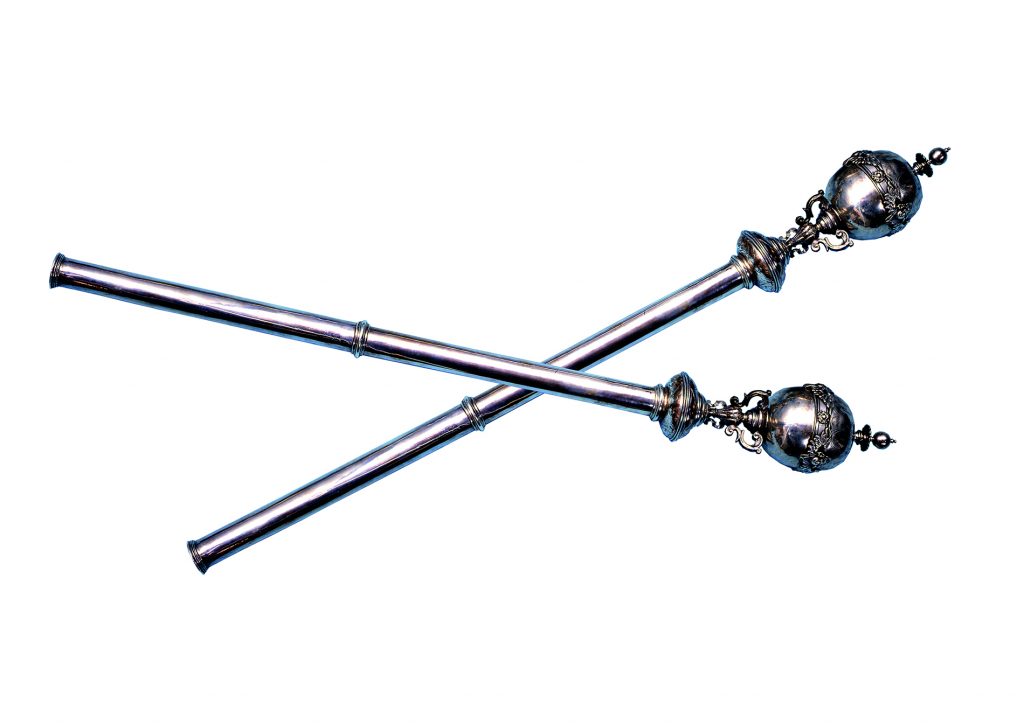

Stories from collections
A new academic year has again begun at our University. To mark the occasion, the Helsinki University Museum’s Object of the Month blog presents the University’s silver sceptres.

It is August, and students admitted to Finnish institutions of higher education appear on the streets with peer tutors wearing their overalls. I donated my own pair of student overalls to the Helsinki University Museum in 2015 for the new main exhibition. It had been years since I had worn them, and whenever I had moved, I pondered whether to keep or donate them. Luckily, I had kept them, possibly in anticipation of a renovation or paint job that had never happened. The overalls, originally designed for Rupla, the association for students of Russian language and literature as well as Slavonic philology, were issued in November 1990. My pair was on display in the Power of Thought exhibition until August 2018.
Acquiring a pair of overalls was no easy task. Two energetic students of Russian, who had begun their studies in 1987, decided something had to be done after enduring three May Day celebrations wearing the ‘boring overalls designed for the University of Helsinki Student Union’. They did not hesitate to approach large companies to talk to those holding the purse strings. Usually, they were given just a phone number to call. The cost estimate for an order of 40 pairs of overalls was 10,000–12,000 Finnish markka, truly a tall order, as just two names were on the list of buyers in March 1990. However, the project moved forward, and by May, the number of buyers was already 13. The rank-and-file members of Rupla had a suspicious, if not surly, attitude towards the project.
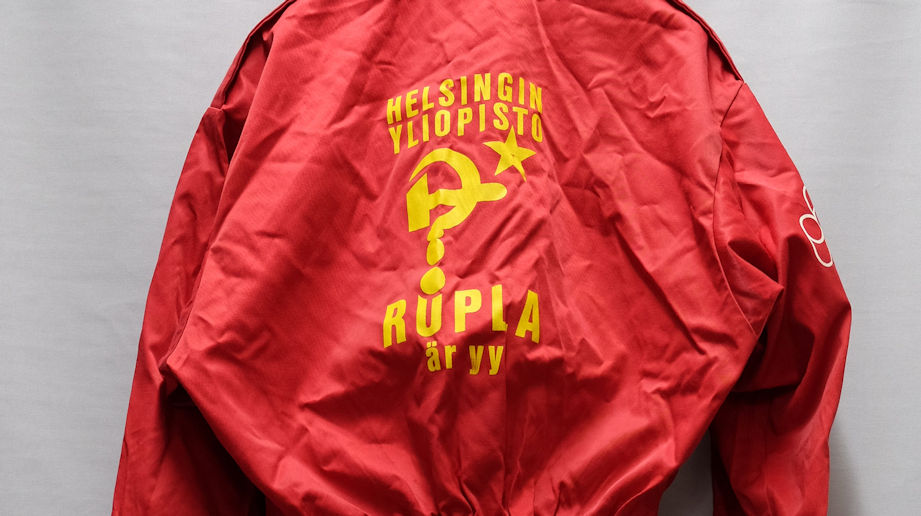
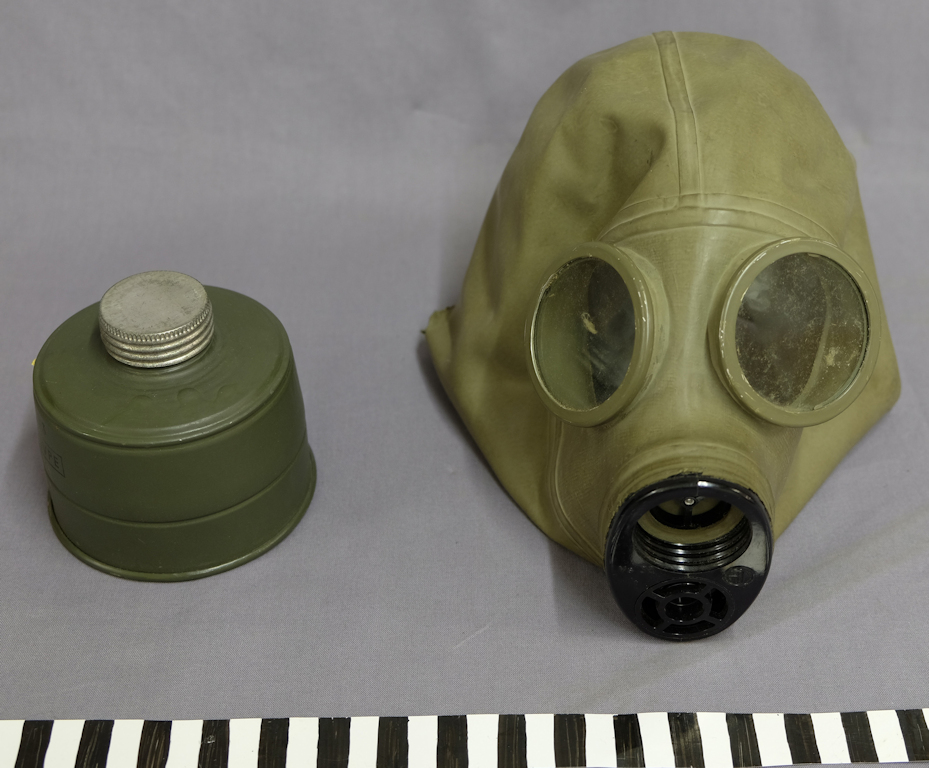
The collections of the Helsinki University Museum include eight gas masks, of which seven are from the 1930s and intended for the civilian population. The University Museum has received the masks from hospitals and University of Helsinki departments. The collections also include an equine gas mask dating back to the 1930s or 1940s which is of an unknown origin.
In 2015 we made plans to place one of the civilian gas masks on display in the University Museum’s new main exhibition, The Power of Thought. However, we had to scrap these plans at the last minute when we discovered that the filters of old gas masks may contain asbestos.
In spring 2020 we decided to find out whether these suspicions were true. In this blog post, we explain how we investigated the matter and what we eventually found out.
An older gentleman slightly turned to the left looks sombrely out of a painting. A high-collared, white shirt is peeking out from under the black coat. The medal of the Order of Saint Anna hanging on a red ribbon around his neck and the Cross of the Order of Saint Vladimir on his chest speak of the appreciation of the Emperor. His grey hair is combed back. The man immortalised on the canvas is Johan Agapetus Törngren (1772–1859). The Object of the Month is an instrument purse that used to belong to him.

It is May. Spring-green foliage curves round to frame a scene in a park. The atmosphere is tense, the adults and children have a concentrated look on their faces. A man dressed in black, Fredrik Cygnaeus, is about to step down from the rostrum and the eyes of his audience are following him. Clear pastel colours create an impression of the air shimmering.
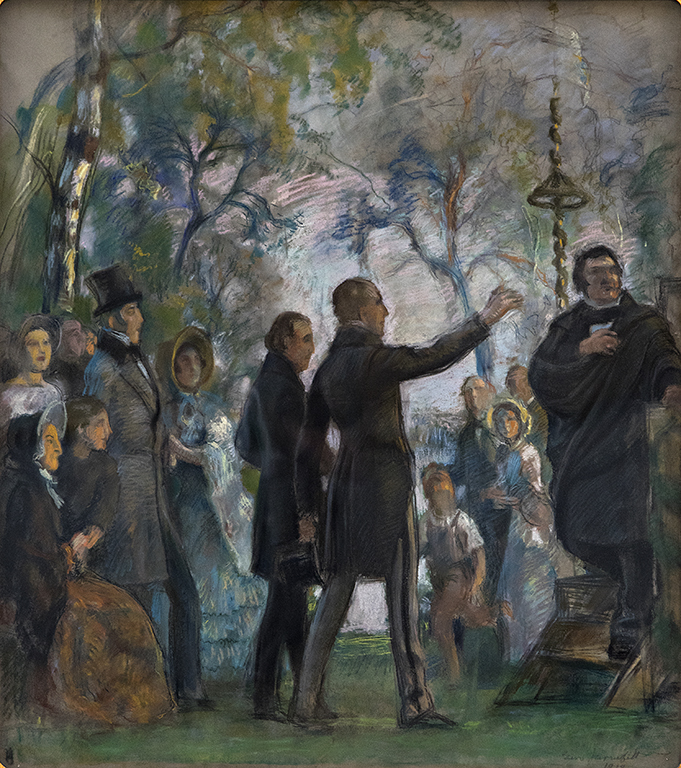
Continue reading “Flora Day, Eero Järnefelt’s sketch for a mural”
This time, we will present a beautiful object, which was added to our collections just a few weeks ago, and will also introduce its original owner. It is the laurel garland worn by Tekla Hultin when she was conferred a master’s degree on 31 May 1894. Although the tips of a few of the laurel leaves have broken and the green silk bow is slightly crumpled, the garland is in excellent condition. Looking at it lying on silk paper, you can almost smell the faint herbal aroma it emits.

Continue reading “Tekla Hultin – always at the heart of the action”
A beautiful old, still-functioning precision pendulum clock hangs on the wall of a corridor leading to the Argelander lecture room at the Helsinki Observatory. This ‘Normal Zeit’ clock used to be placed in the lobby of the Observatory building where it functioned as a public timepiece that Helsinki residents could use to check the time. It is soon again time to turn the clock one hour forward when summer time begins. There are plenty of clocks at the Helsinki Observatory, including several precision clocks, the oldest of which dates back to the 18th century. How are these clocks linked to the Observatory?

The collections of the Helsinki University Museum include several signs and banners used in protests and demonstrations. One of them is a 30-year-old, worn-out cardboard sign stapled to a wooden stick, with the text Älä töni mun dosenttiani (‘Don’t mess with my docent’) written in black felt-tip pen.

The University of Helsinki Art Room holds an impressive collection of drawings, but the identity of some of the artists is not known. The signatures, if any, may be unclear, and notes made on the drawings may sometimes be misleading.
As I was cataloguing the drawings in our database and conducting online searches to establish the identity of the artists, I came across a skilled drawing entitled Portrait of a Young Woman, which showed the profile of a woman, from a slightly downward angle, with her hair in a bun and wearing a check shirt. At the bottom of the paper was the name Onni Bäckström, while at the top were the initials F. A. followed by ‘April 93’. Based on what I saw, I immediately assumed that the artist was a male student called Onni Bäckström. The initials at the top were of the person who had approved the work: Fredrik Ahlstedt, a teacher at the Art Room.
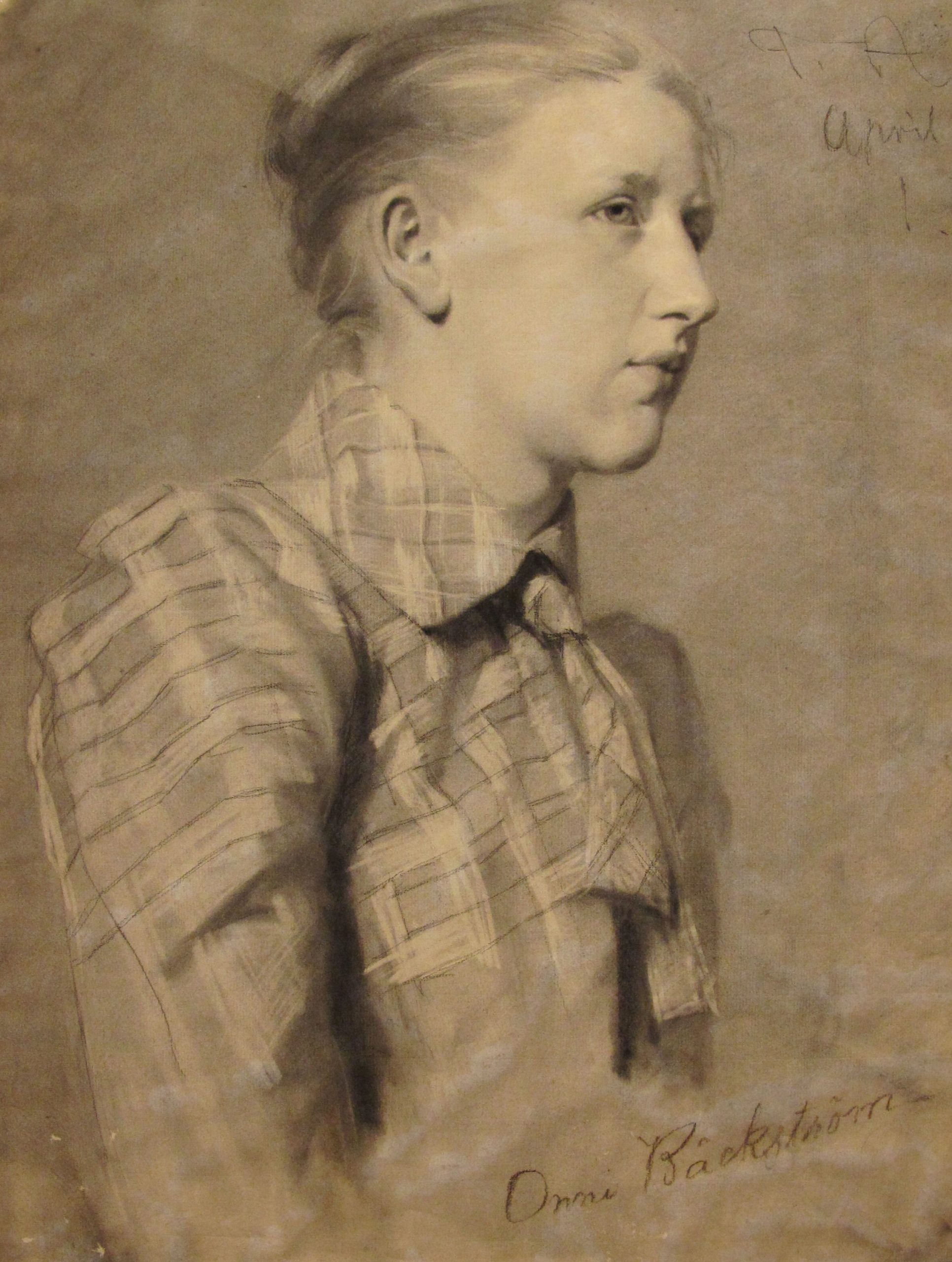
This month, we will be discussing two objects made by students of medicine, a tea cosy and a wall hanging. Both come from the maternity ward of the Helsinki general hospital. The maternity ward provided practical training on childbirth to candidates of medicine from 1833 onwards. A dedicated hospital for childbirth and gynaecological treatment as well as the practical study of gynaecology didn’t exist in Finland until the establishment of the Naistenklinikka Women’s Hospital in 1934.
